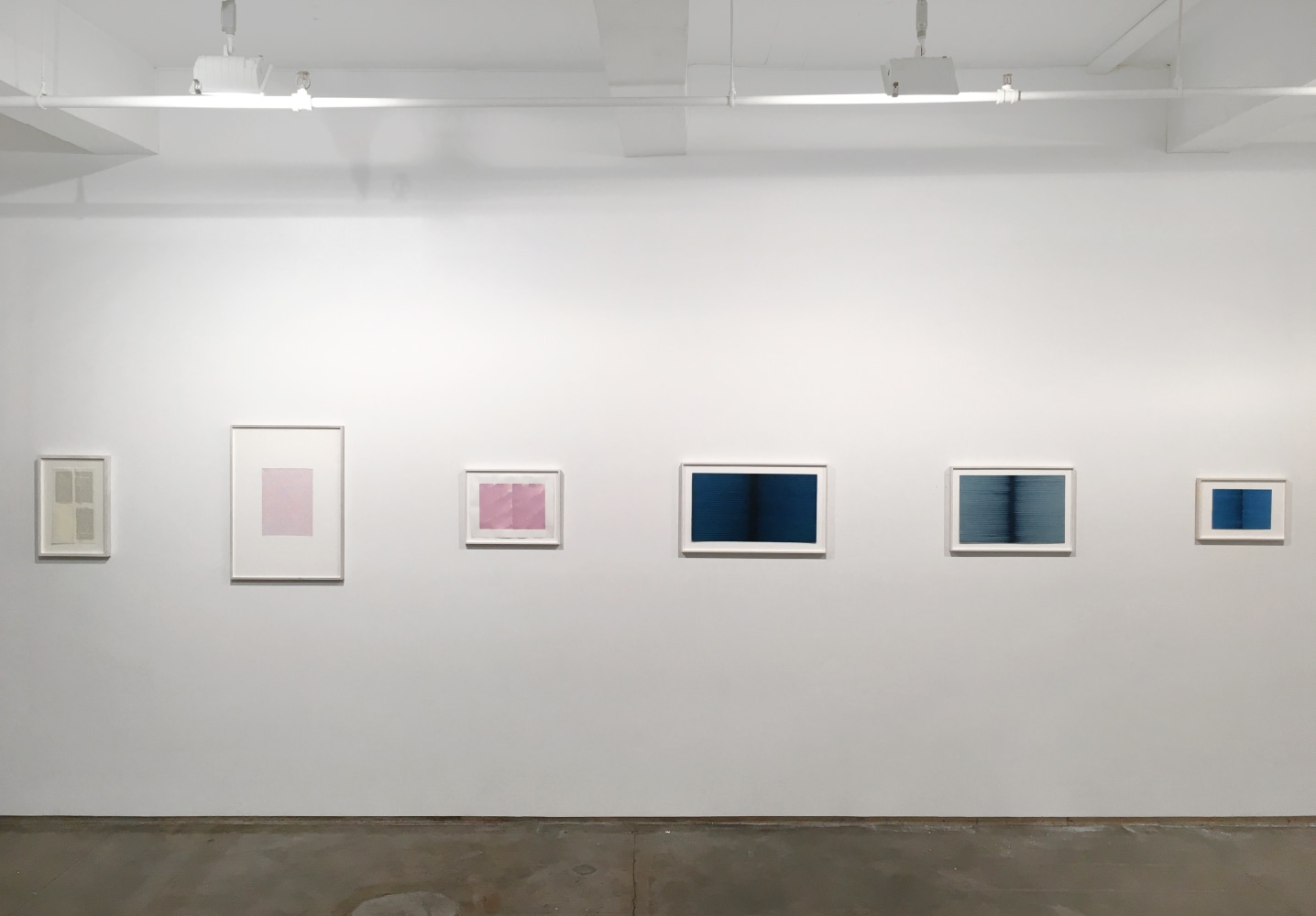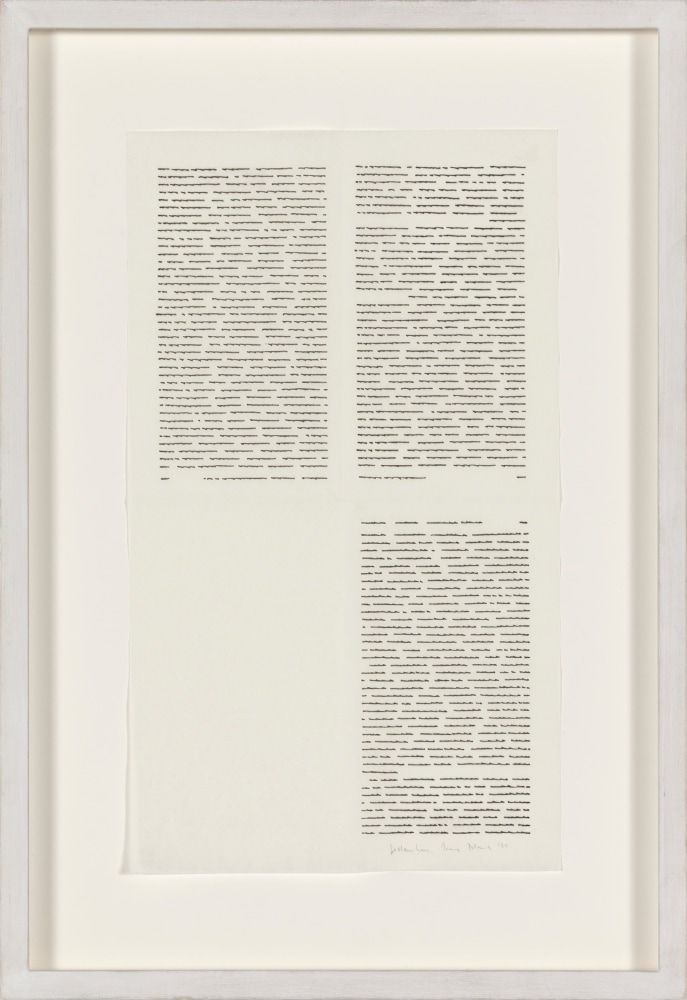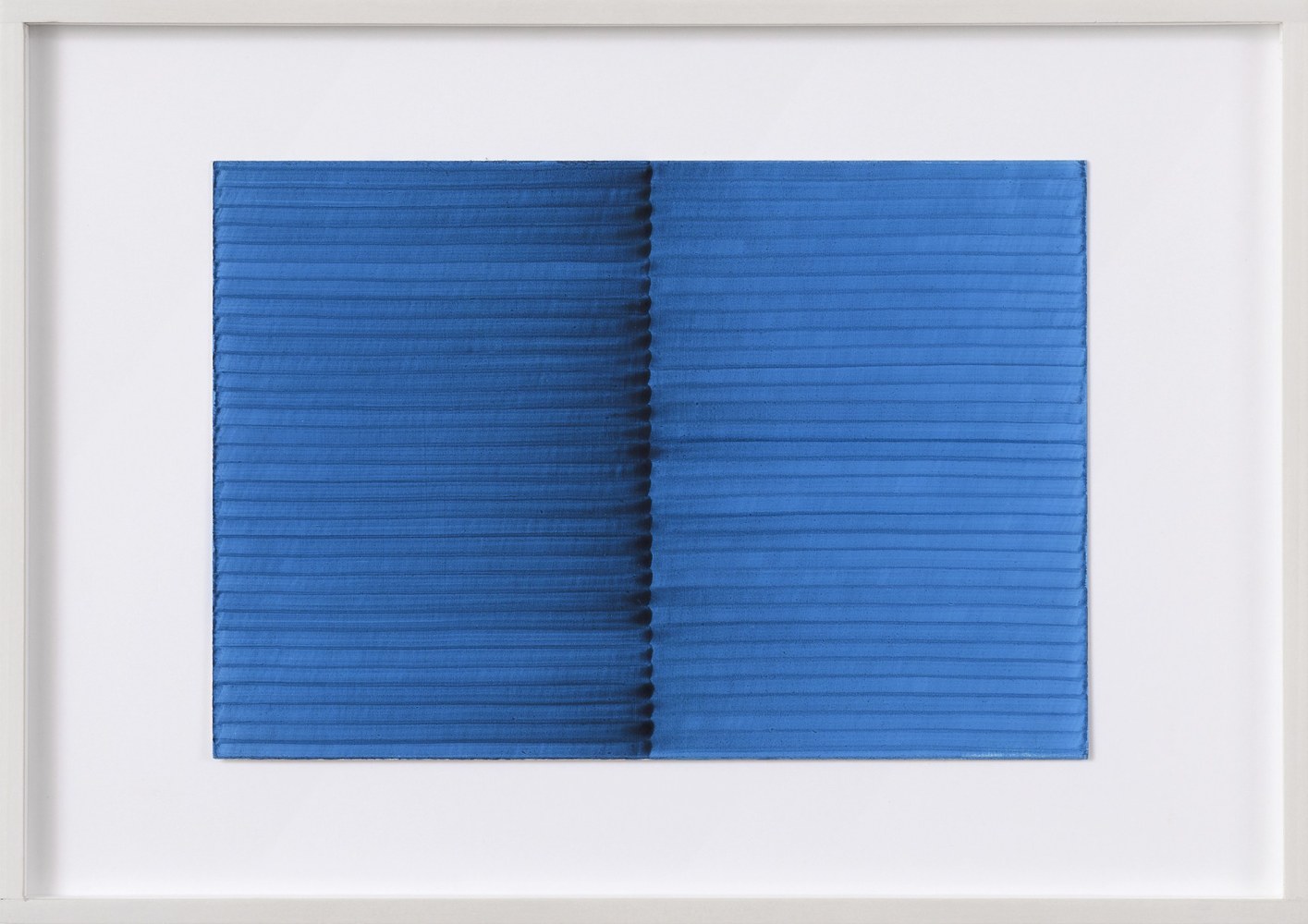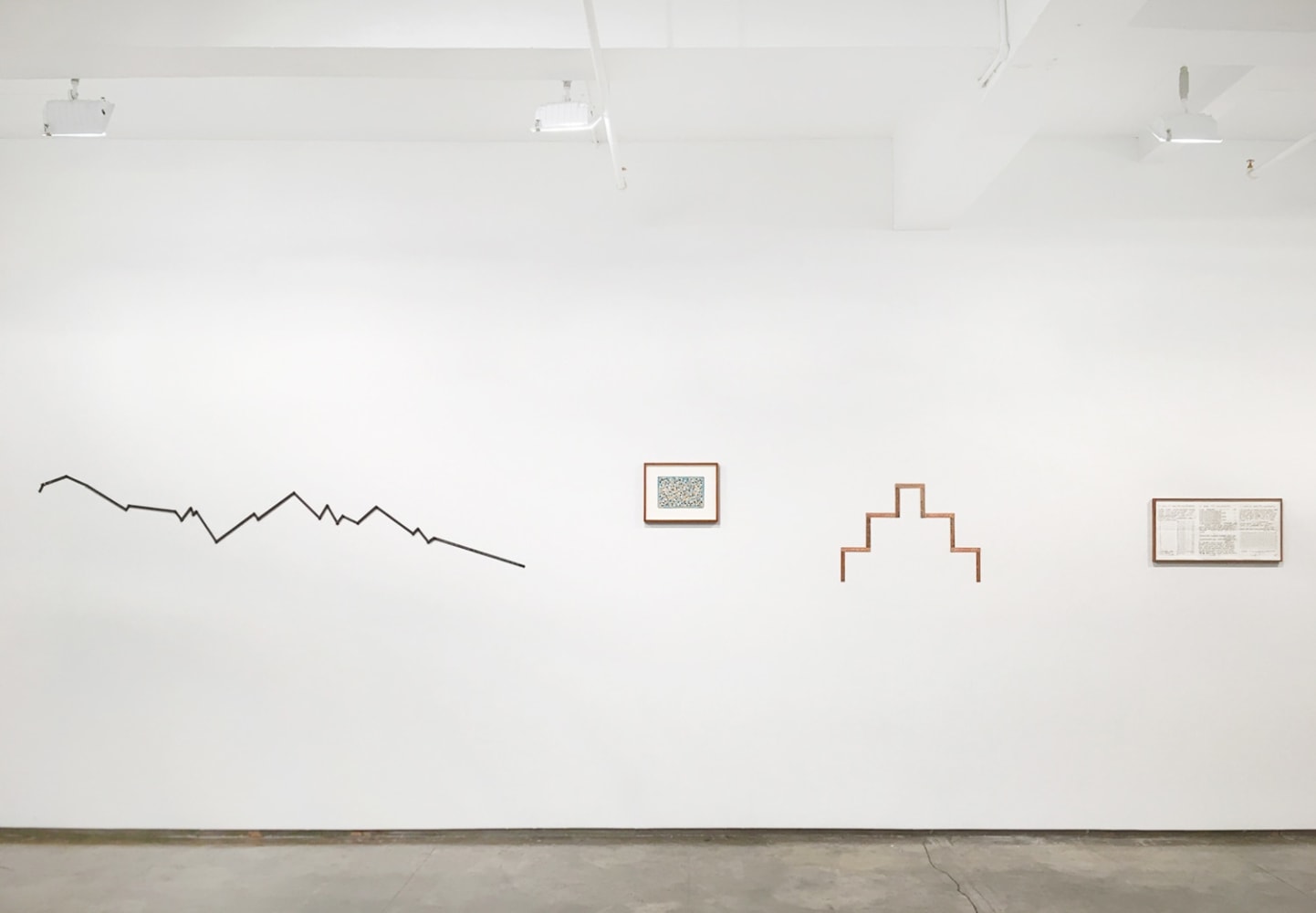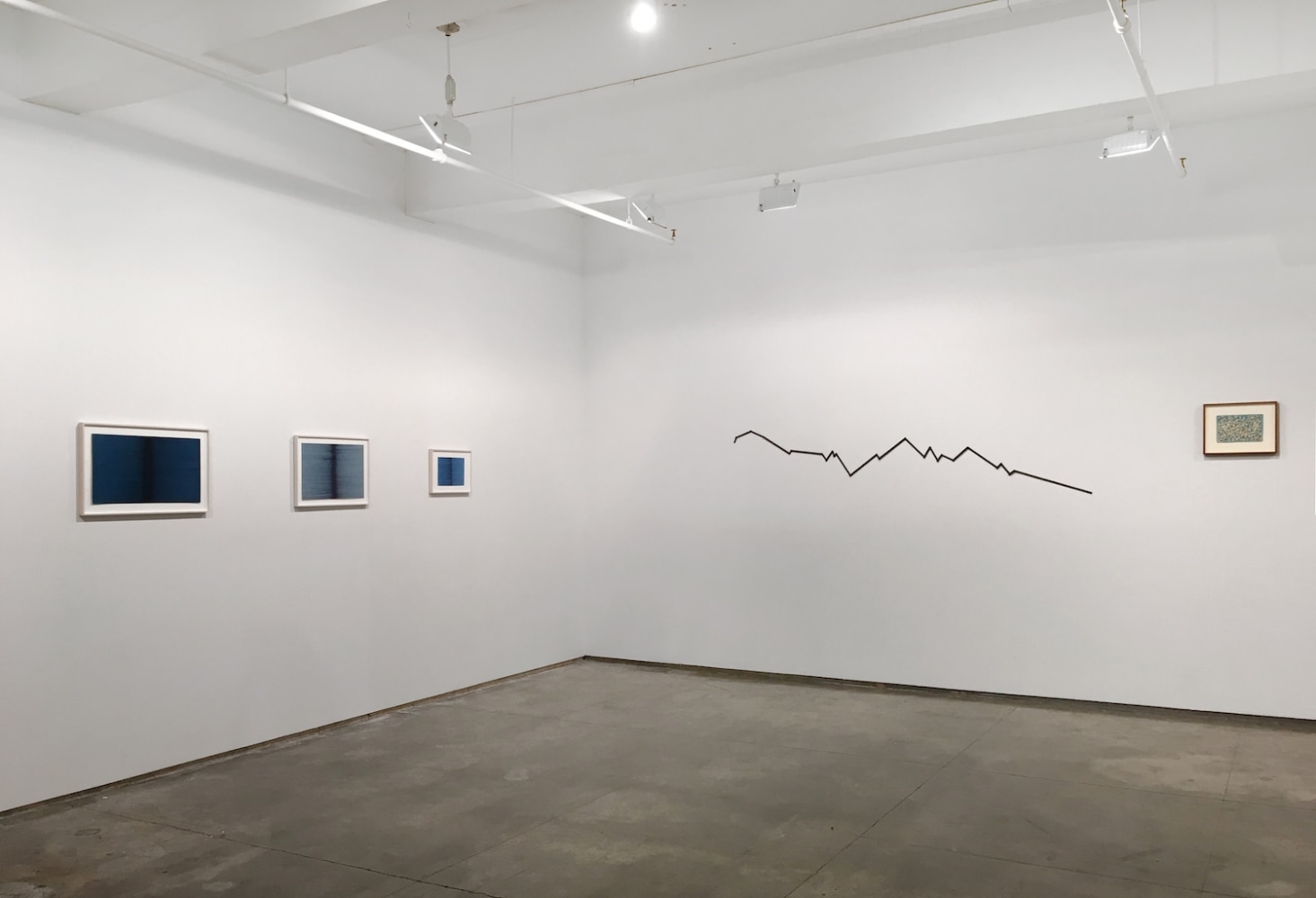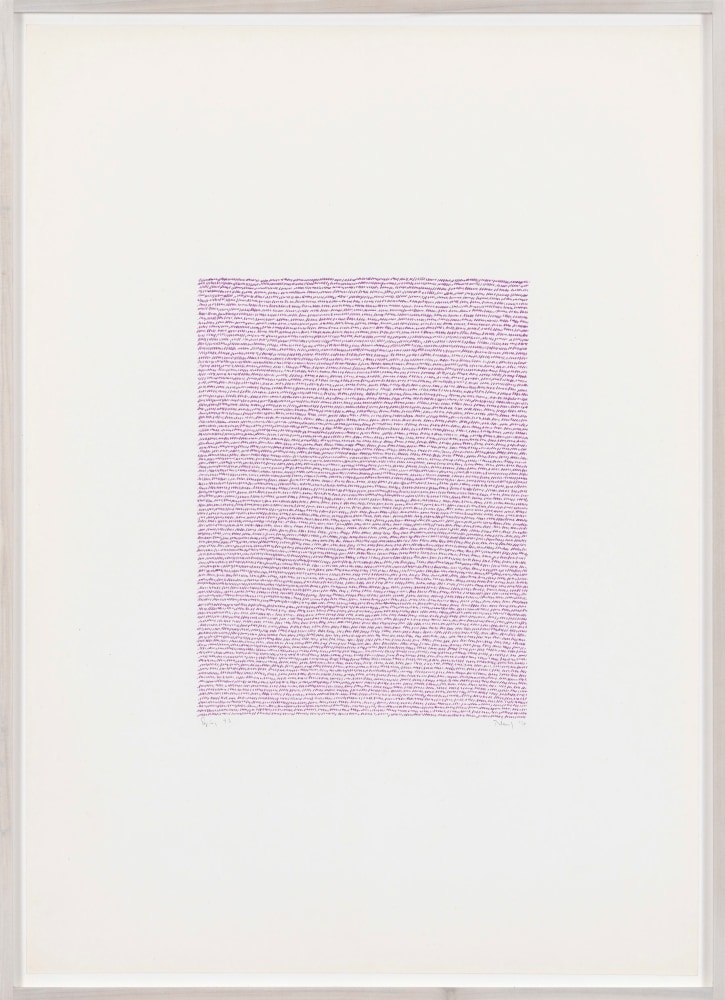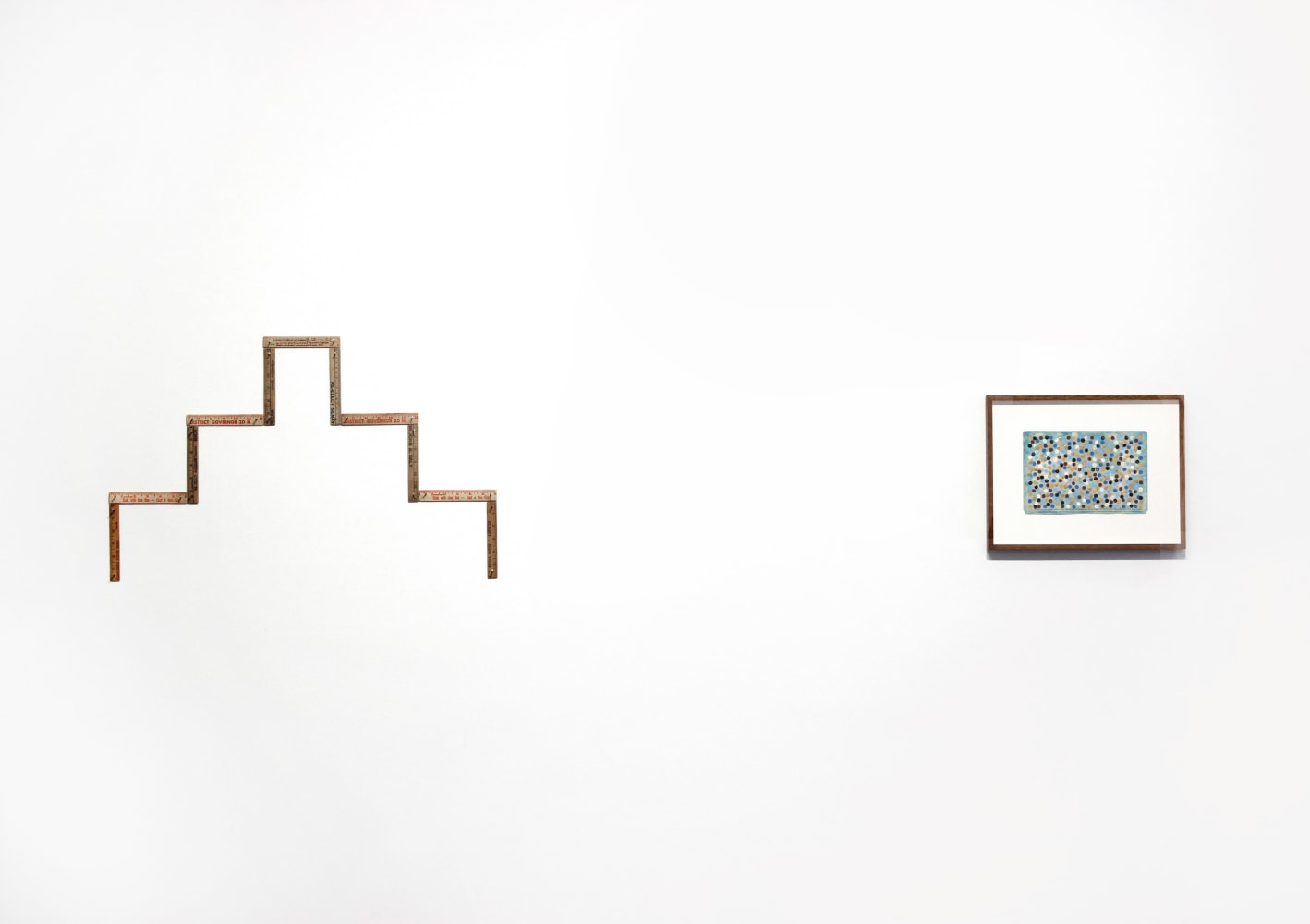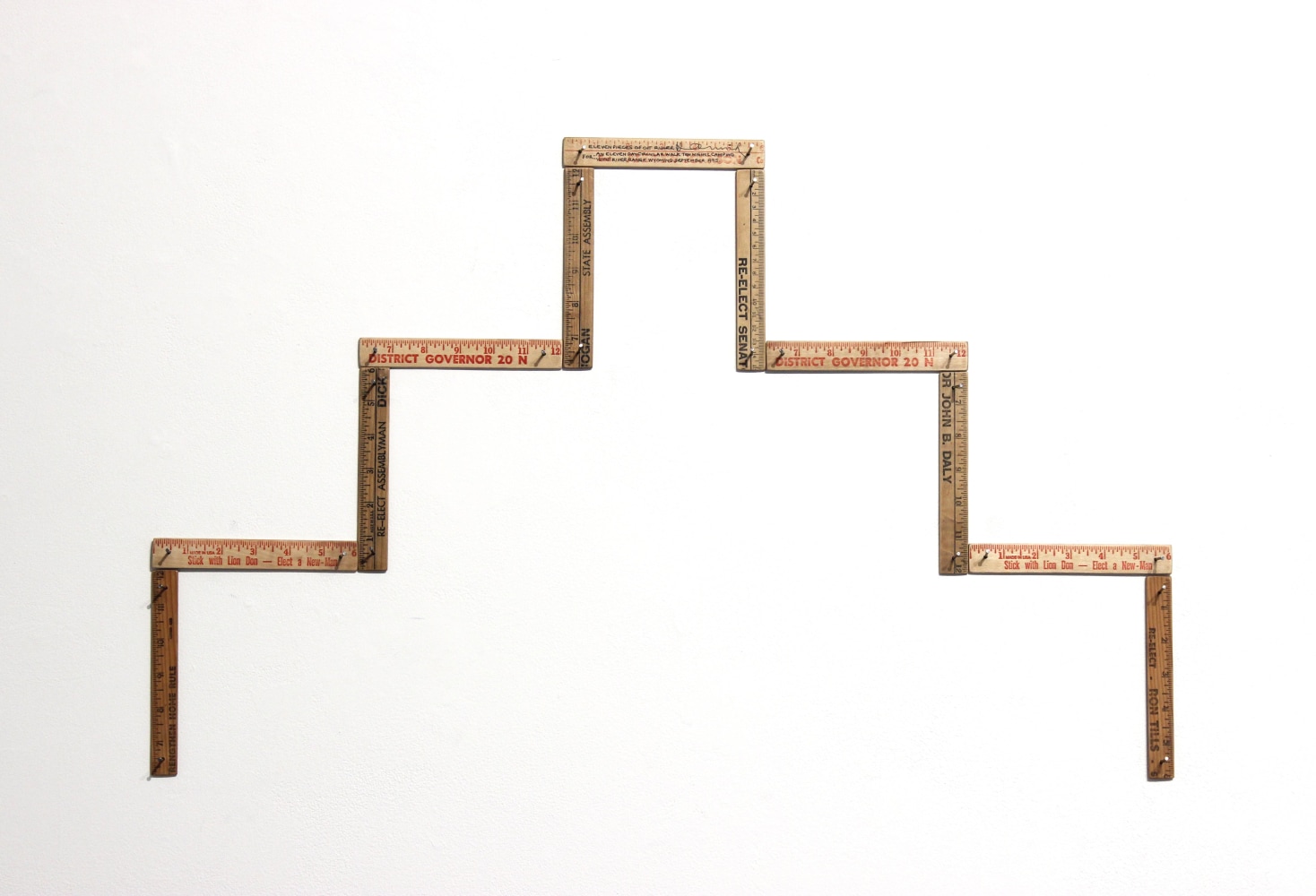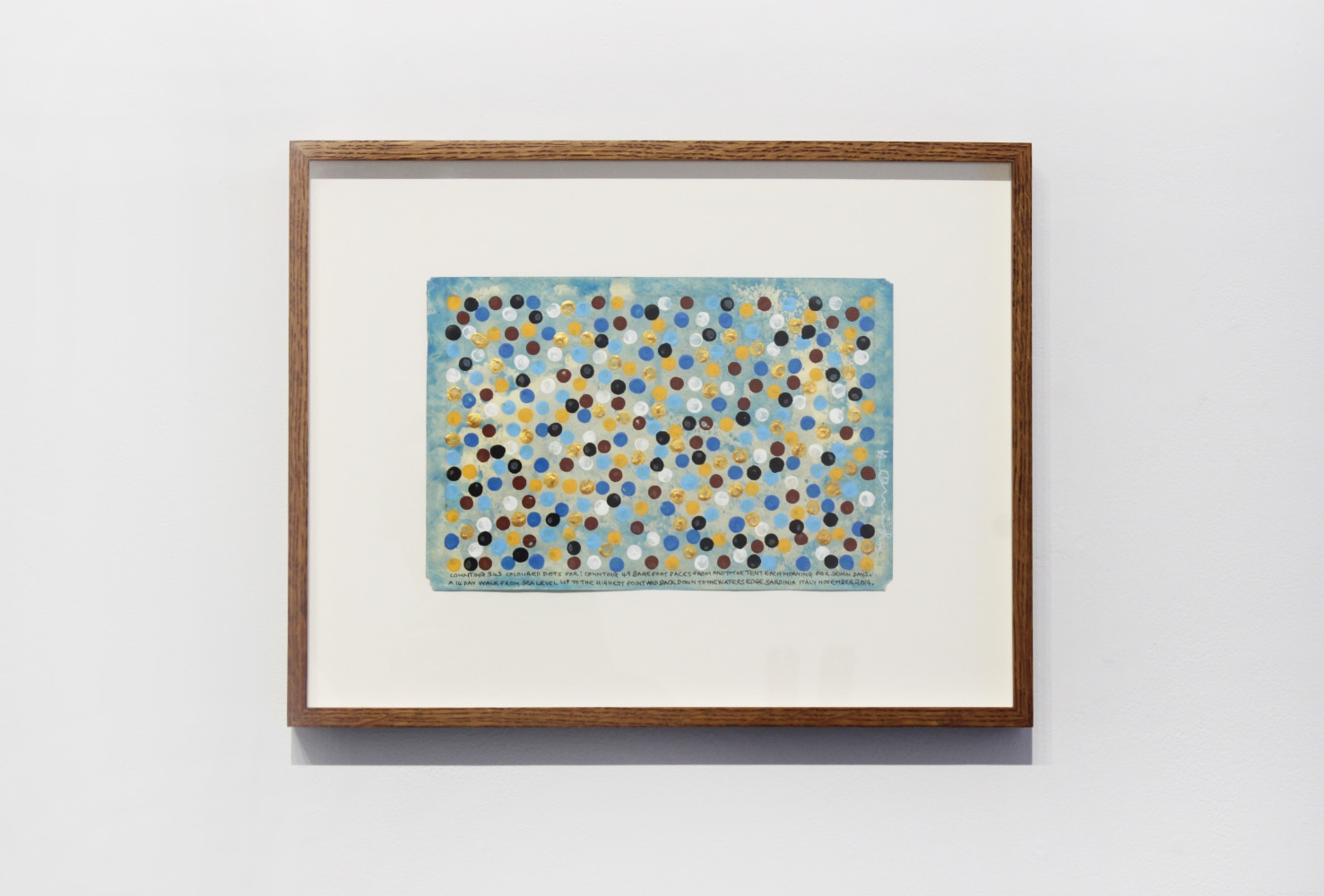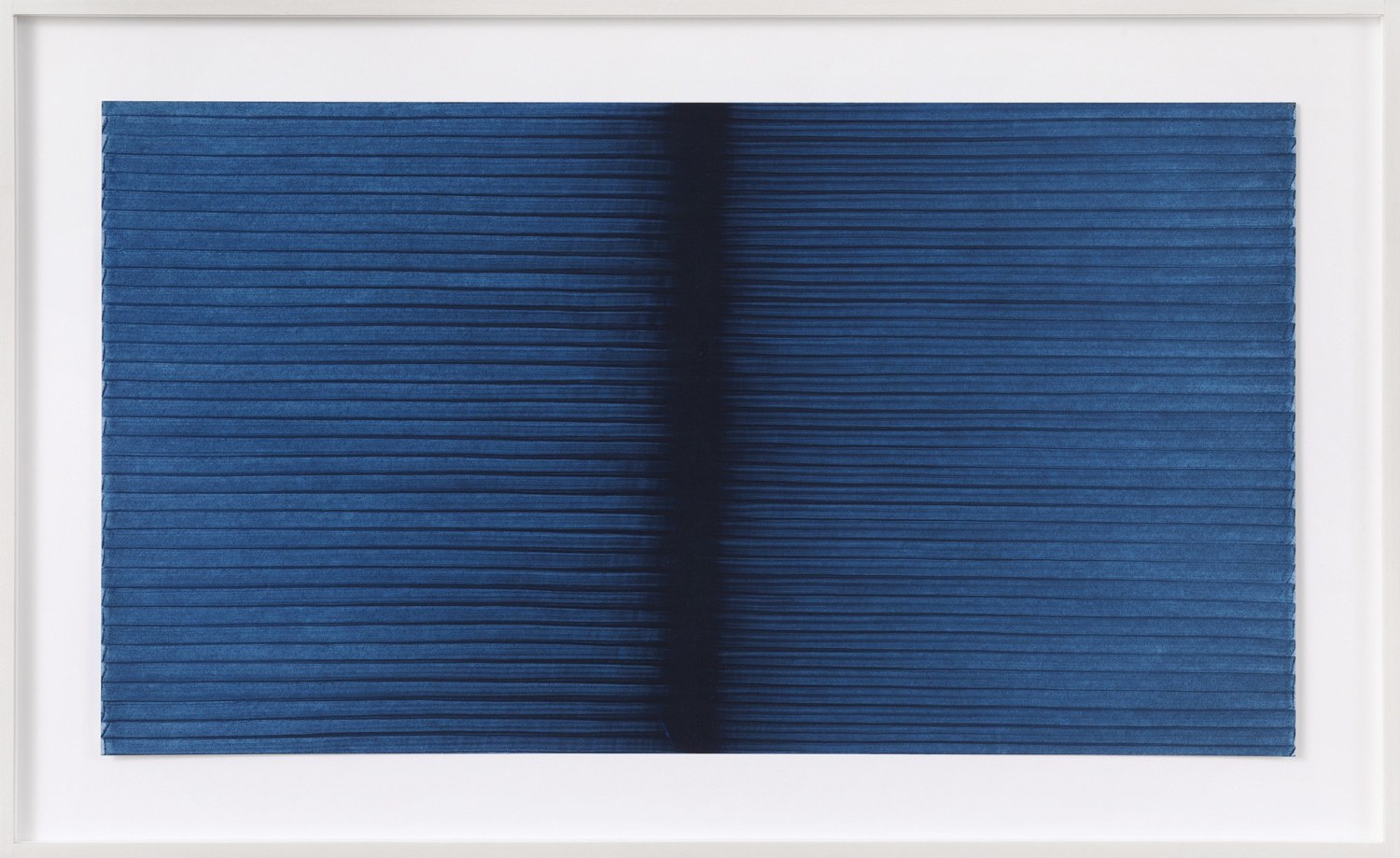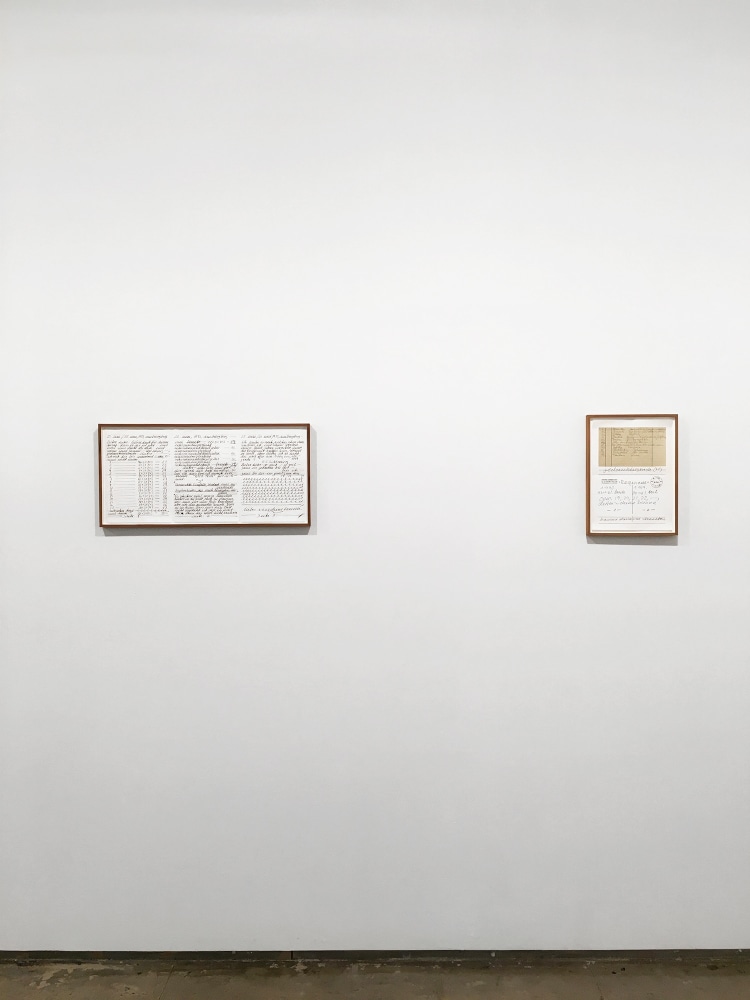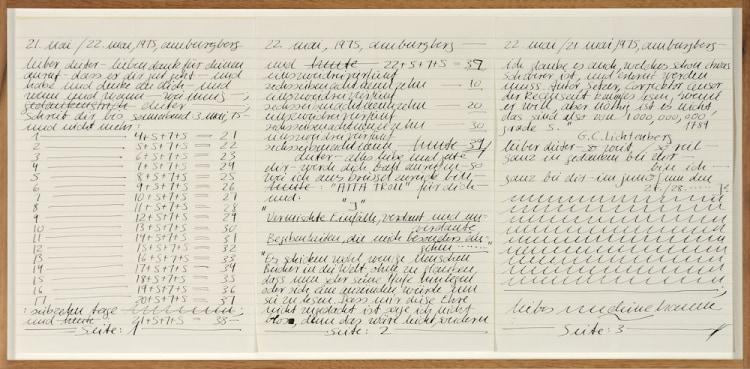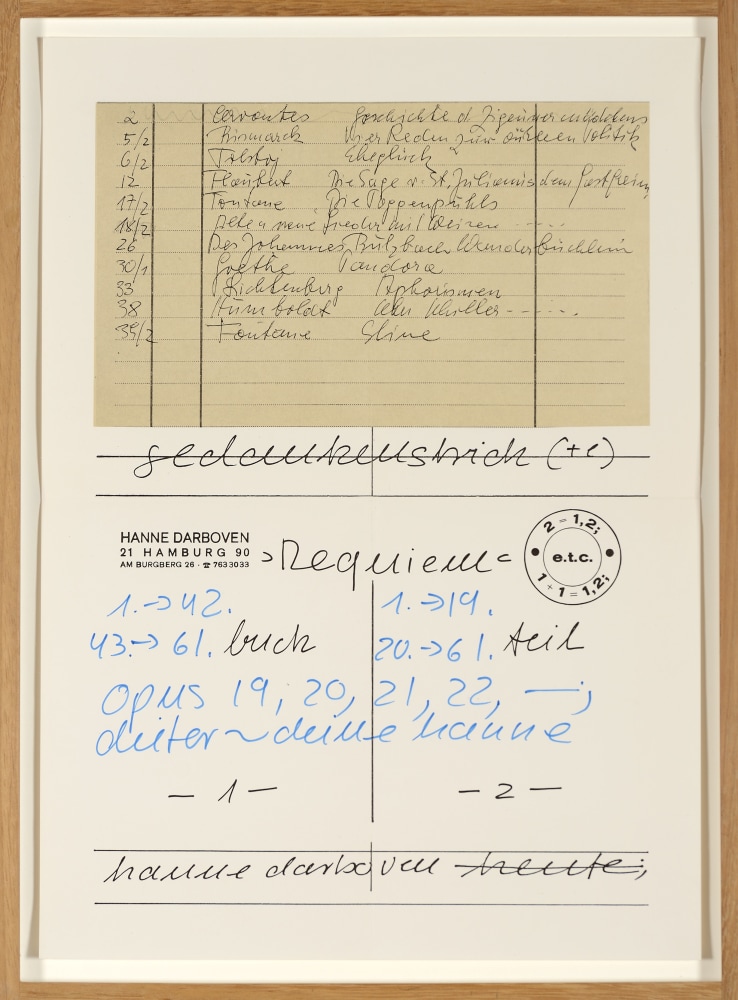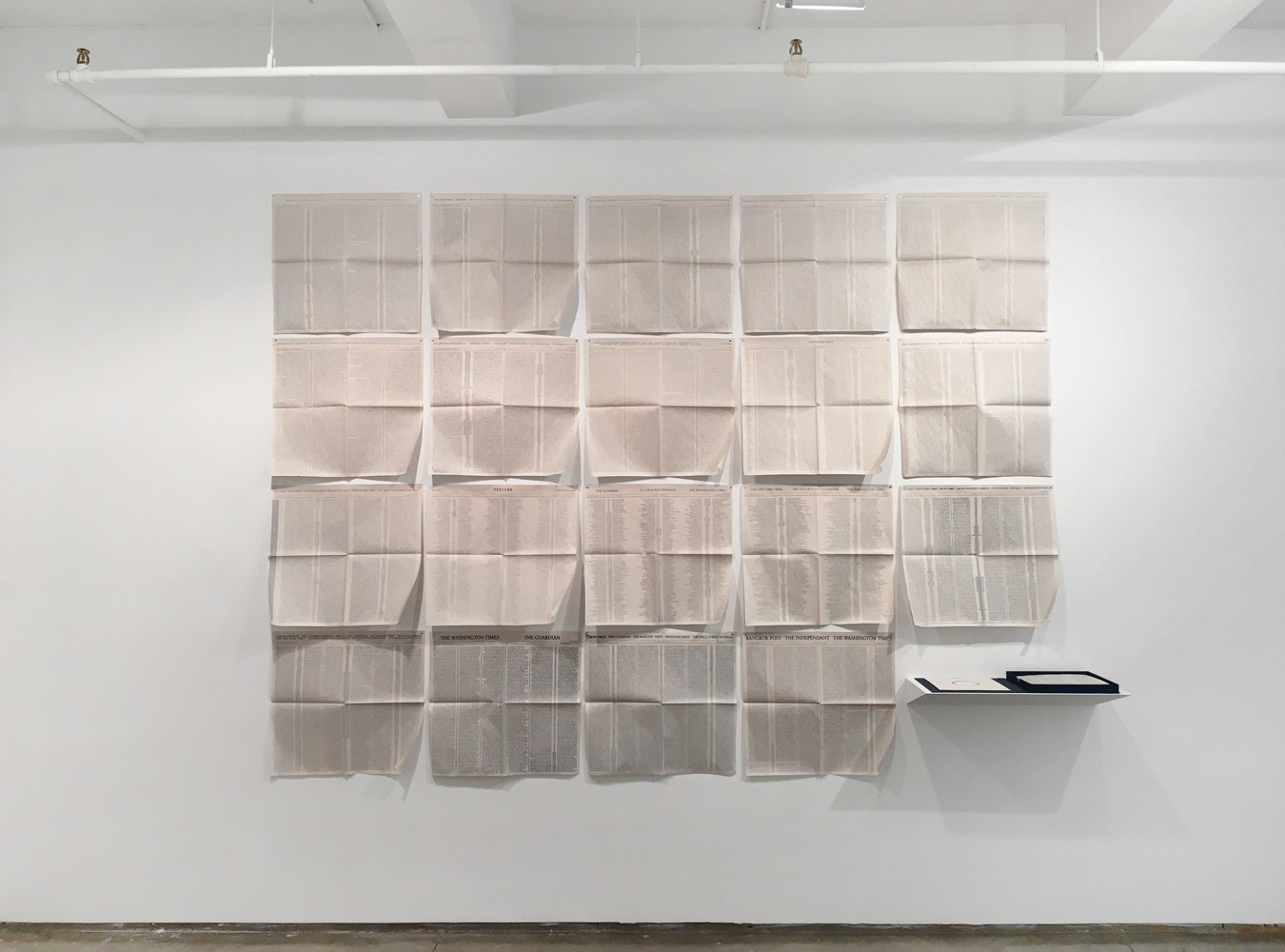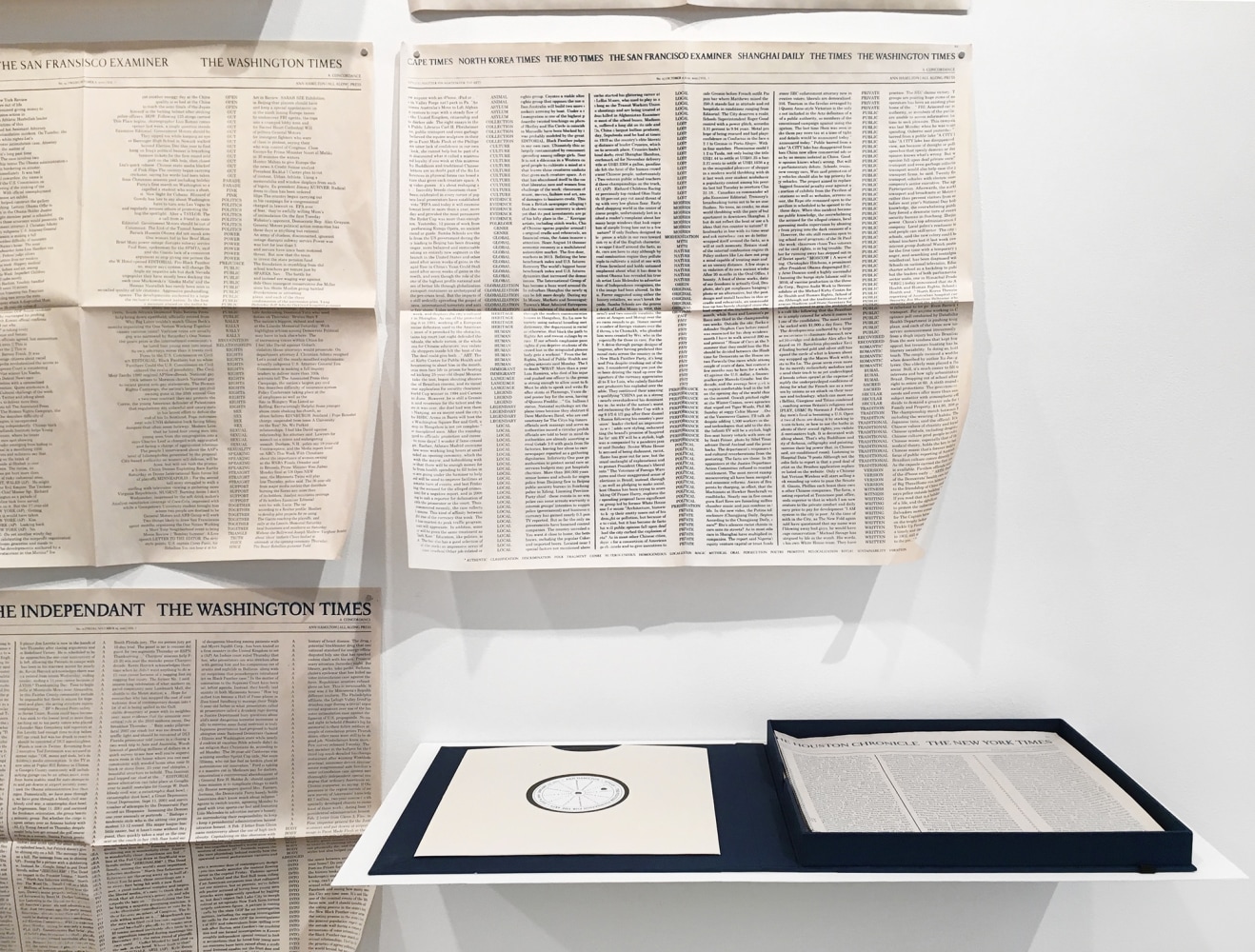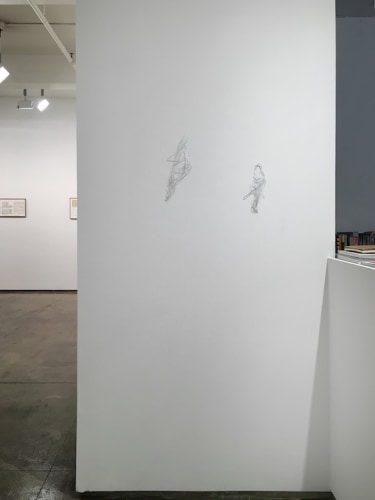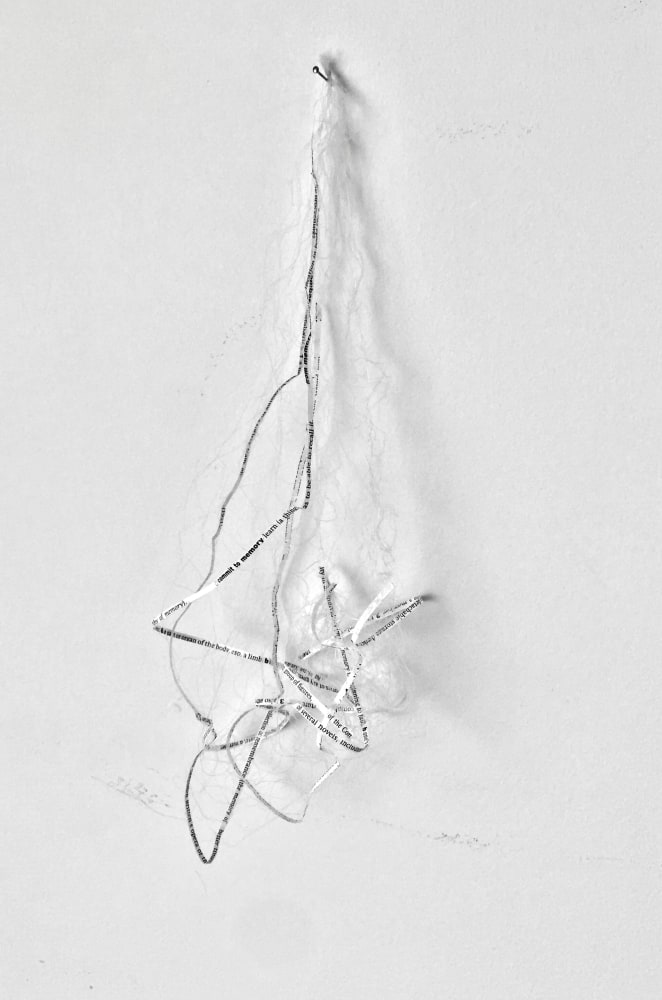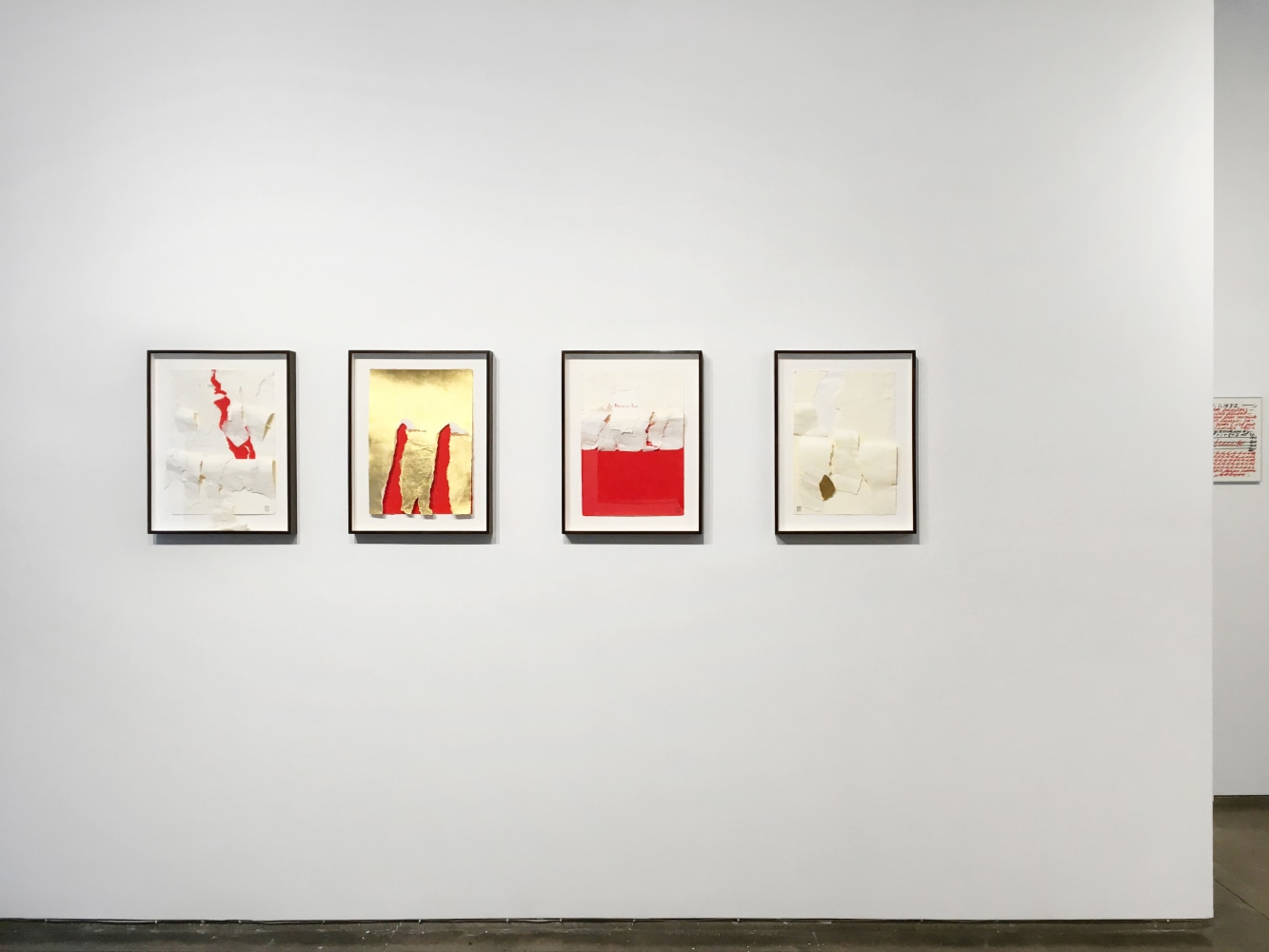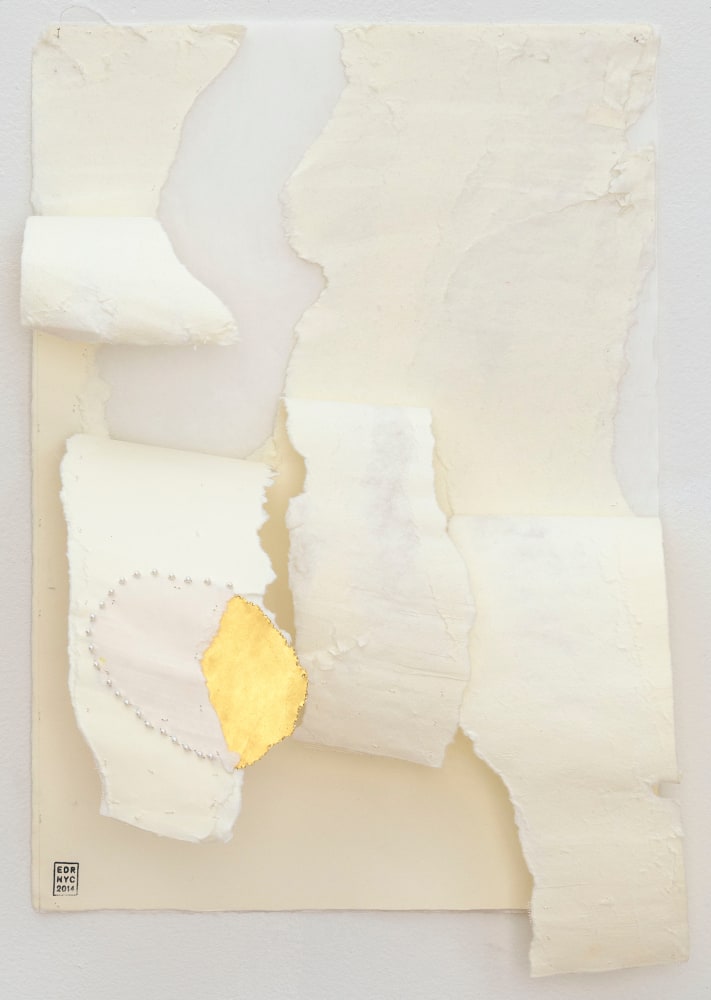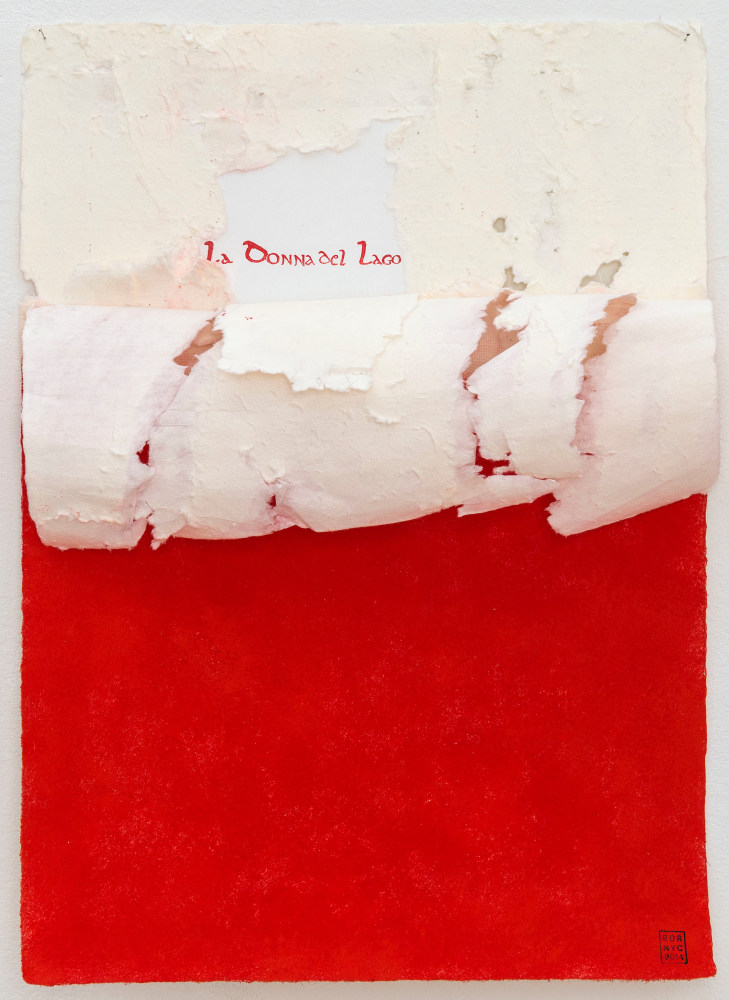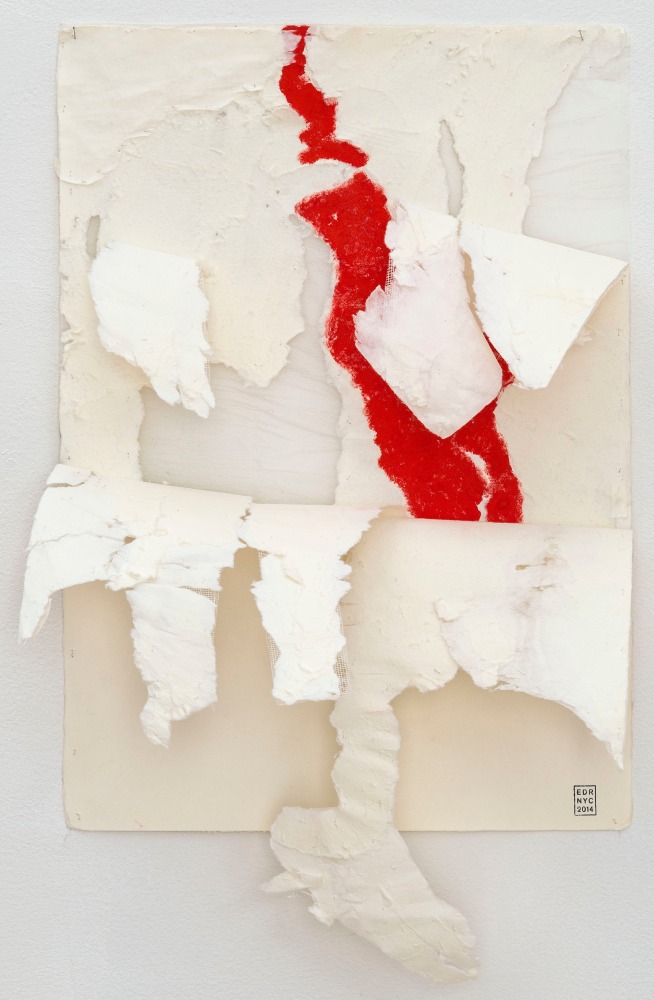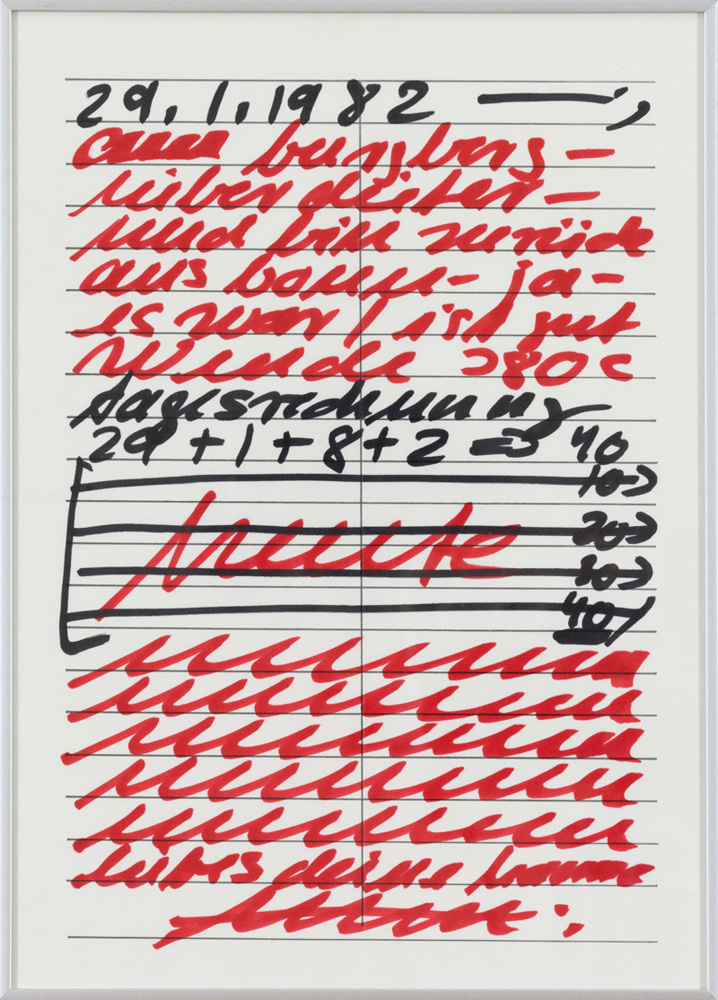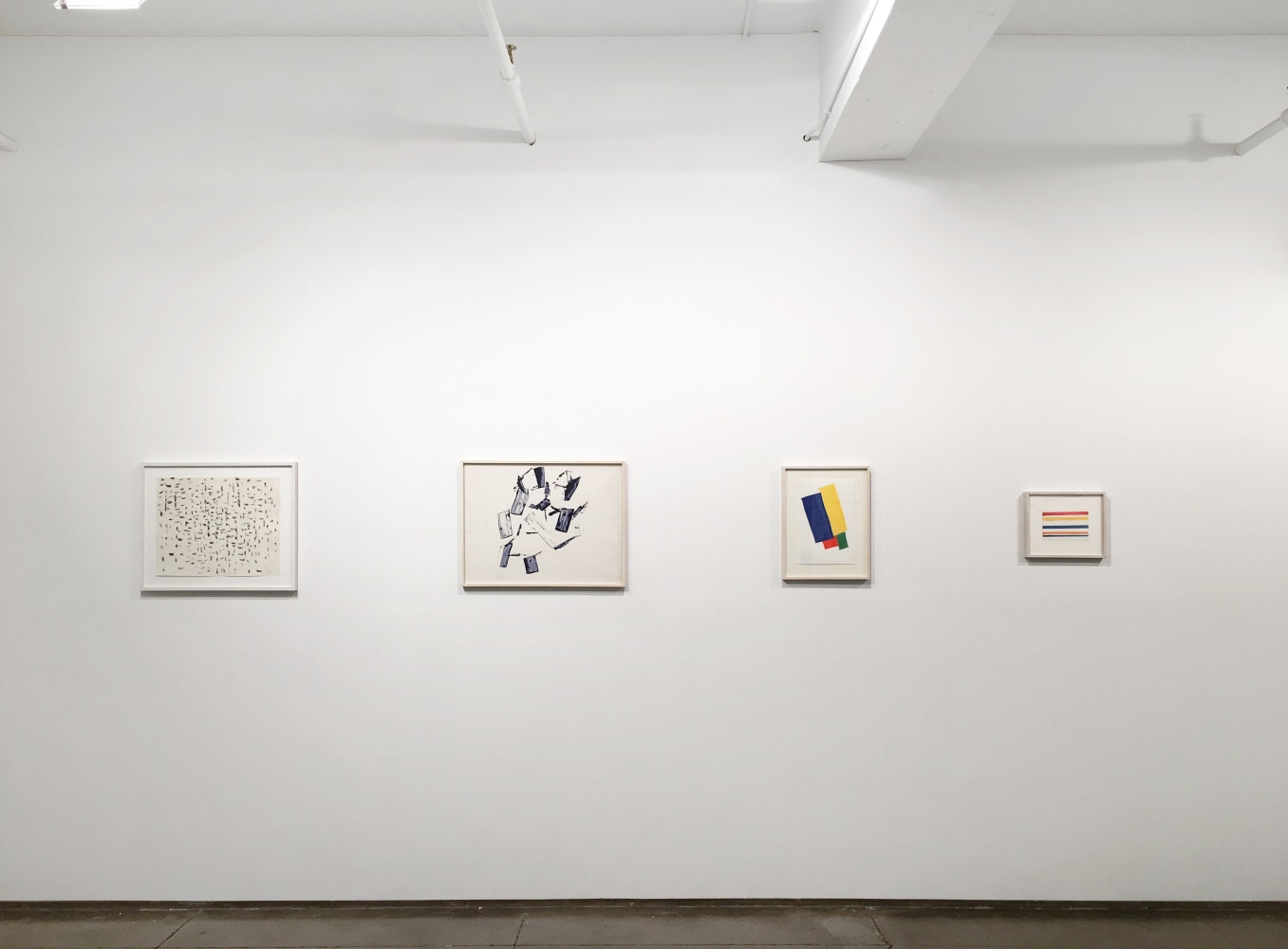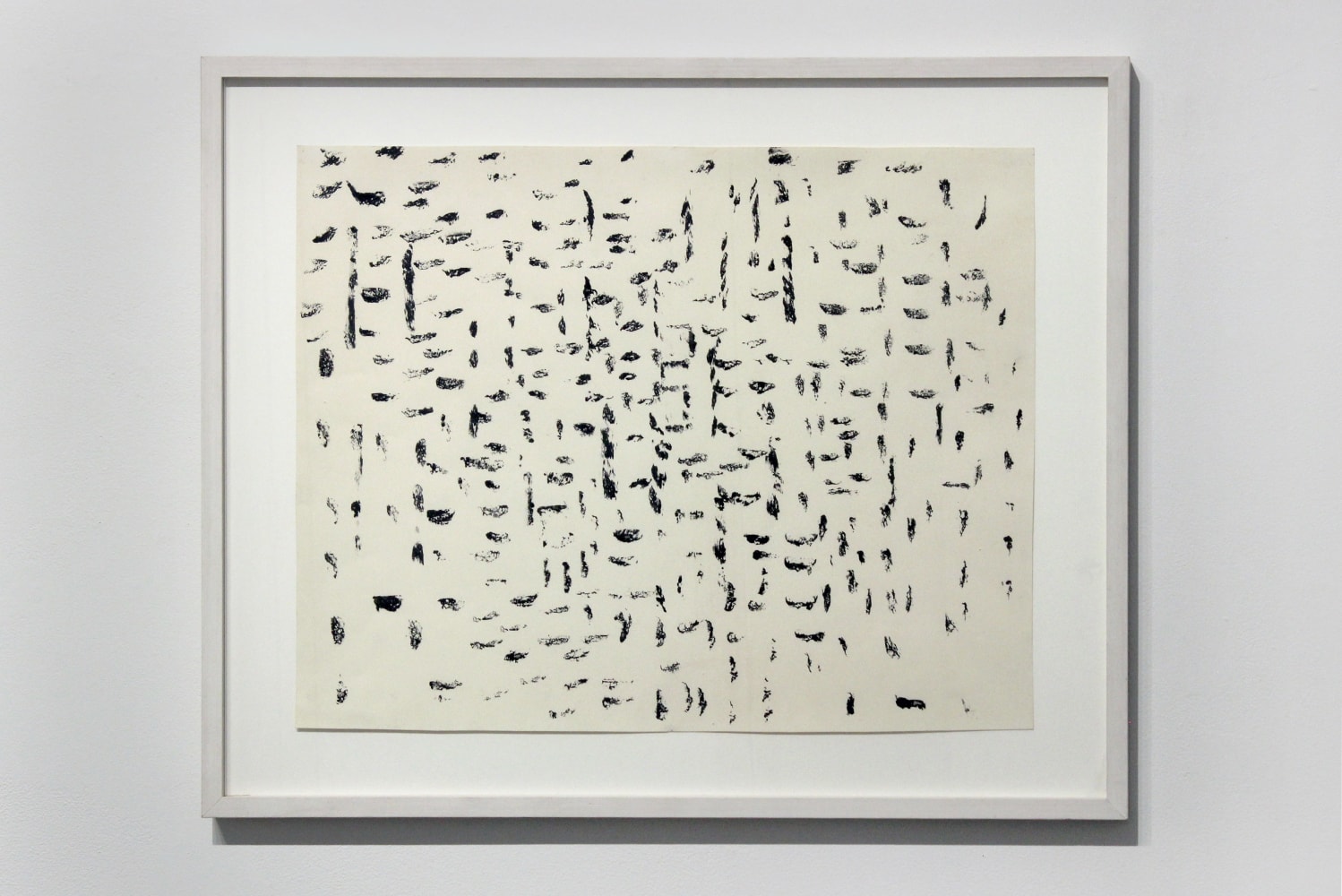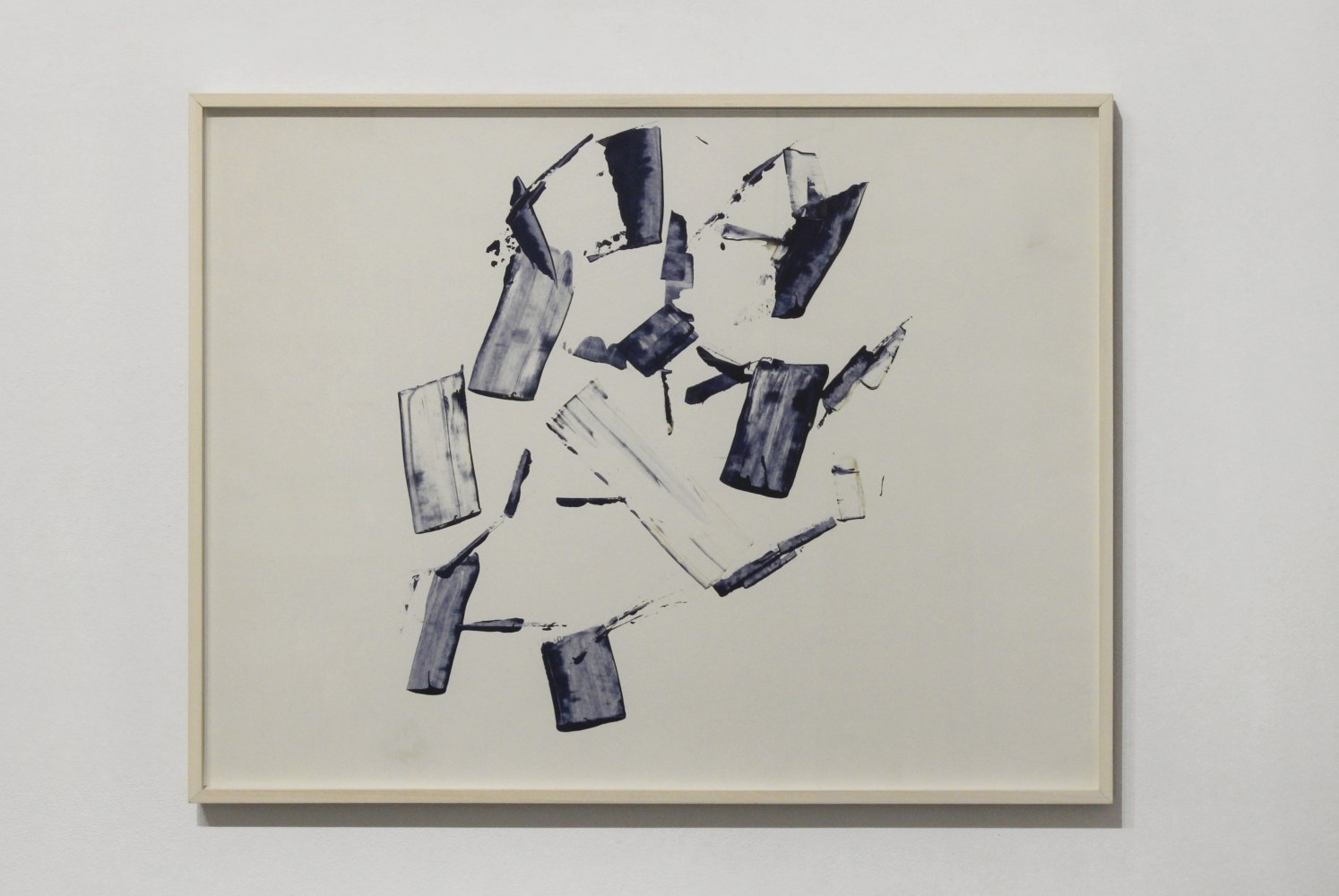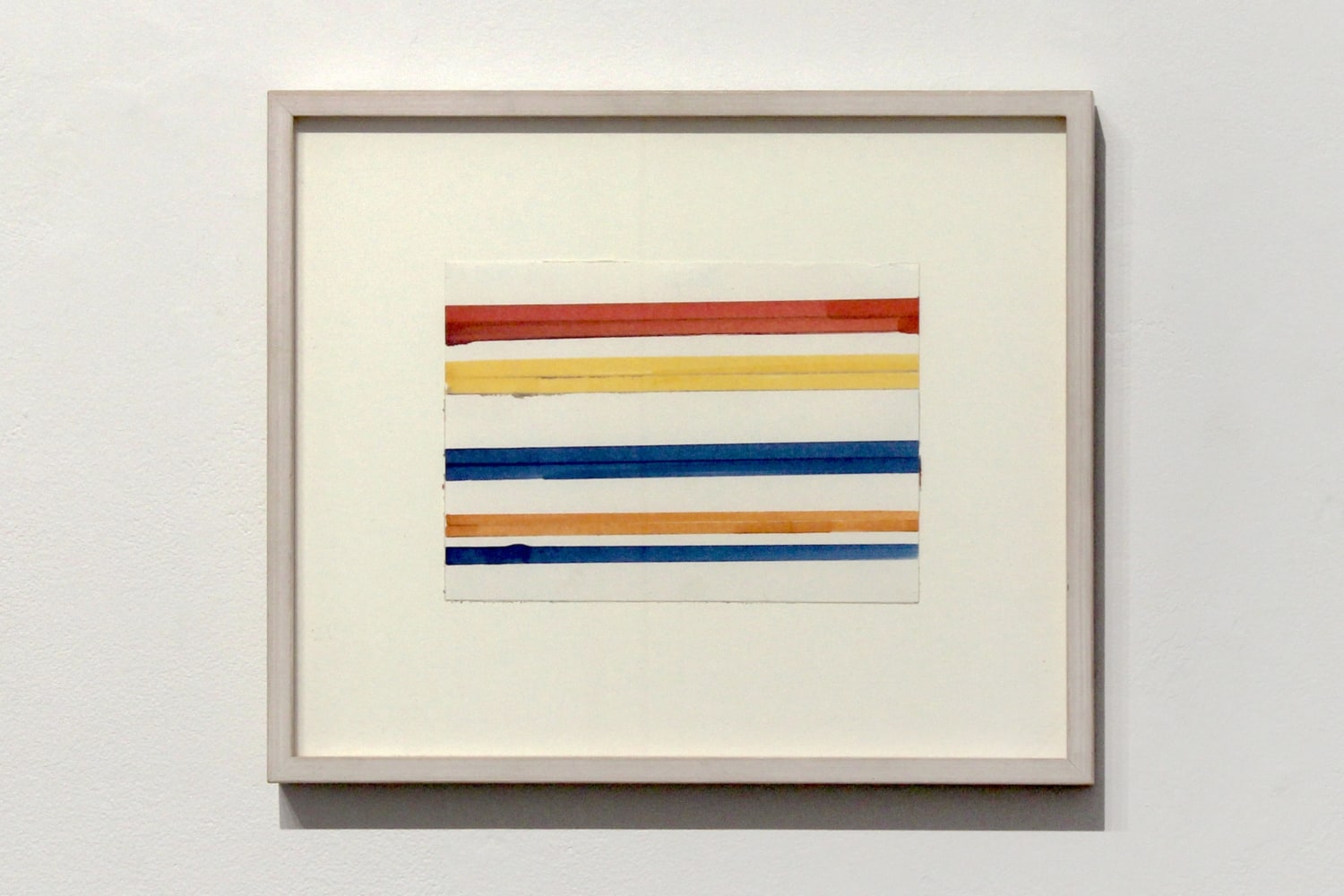Brunch: Saturday February 13, from 11am - 2pm
Radical Drawings is an invitation to take some distance in order to get closer. When carefully examined, a drawing allows one to get away from the global noise and to focus on an artificial silence, a less obvious and predictable world. After overcoming grand ideologies and theses, hope resides in parentheses, the spaces that separate one idea from another, prior and posterior to certainty. Titled after Irma Blank's seminal series Radical Writings, the exhibition offers seven parentheses across generations of artists whose work stand on the border between drawing, knitting and writing.
The works in Radical Drawings touch upon the fragile nature of communication. German by birth (Celle, Germany, 1934), Irma Blank moved at a very young age to Italy, where she still lives and works. Her work developed in the atmosphere of linguistic experimentation typical of the second half of the 1960s. While the exponents of the minimal-conceptual avant-gardes recorded the time of their existence through an impersonal and de-subjectivized art, Blank immediately focused, as she says, “on writing, stripping it of meaning, to charge it with other values. A writing purified of sense, an automatic sign that gives voice to the silence.” Her radical and personal response was a writing not linked to knowledge but to being. With ballpoint pen, ink, oil or watercolor on paper, she creates a unique cross section of linguistic and visual representation.
Ann Hamilton (Lima, Ohio, 1956) and Elena del Rivero (Valencia, Spain, 1949) share the same interest in the visual and tactile experiences of written language. They explore similarities among the acts of writing, reading and sewing, emphasizing metaphorical connections between text, paper and textile. Their works are sensory explorations of time, language and memory, sometimes combining objects and actions to suggestively reconcile the divide between emotional and conceptual content. Distillation of time and obliteration of information characterize Stefana McClure’s (Lisburn, Northern Ireland, 1959) approach. Her work involves translation, transposition and reconstruction of the traditional forms of the written word. Her new hairnet drawings are inspired by the admonition to carry one's knowledge lightly. The invisible hair nets enable the wearer to bear their learning quietly on their head, woven into a self-conforming and durable ultra-invisible hair net. Magic knit of sheer nylon yarn, these depositories are the ultimate in self-effacement, you are the only one who knows you are wearing it.
Known for her large-scale works that combine geometric drawings, numerical series, images and writings, Hanne Darboven (Munich, Germany, 1941 - 2009) is often associated with conceptual art, a correlation that should be nuanced further given the unmistakably subjective nature of the process of realization and expression of her works. Darboven aims to create a new language comprised of linear patterns and numbers, devoid of traditional thought and meaning. She often referred to her work as “mathematical literature.” Hamish Fulton (London, England, 1946) defines himself as a “walking artist.” He creates the foundation for his material works through the seemingly simple act of walking. Representations of the walk itself, Fulton’s works are an acknowledgement of the time dedicated to the experience. They are not meant to act as memories, but rather as a recreation of the original experience for the viewers. Purposefully made of humble materials, such as paper, wooden rulers and photographs, the works align with his belief that the walks and their recreations should leave no trace on the environment.
Charlotte Posenenske’s (Wiesbaden, Germany, 1930 - 1985) drawings from the late ‘50s reveal her exploration of contemporary movements such as Art Informel and Abstract Expressionism. She quickly put aside pure forms of individual expression and started applying paint with a palette knife, creating a greater distance between herself and the painting’s surface. In her early works on paper, the Spachtelarbeit series (palette knife works), Posenenske questions the idea of authorship, playing with ways to eliminate the subjectivity of her hand. In 1968, disappointed by the physical limitations of art to solve societal issues, she made a radical move and terminated her artistic career, turning her attention to sociology. Between precision and chaos, imagination and restrictions, vindication and frailty, fluid deviations and rational forms, Posenenske offers a poetry of improvised action.

